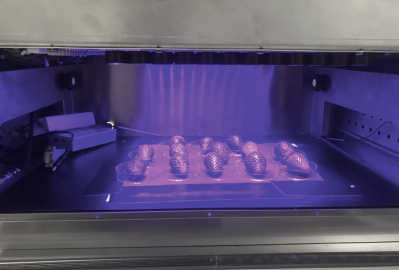Egypt listeria testing: Bacteria most commonly detected in meat, fish, sausages and milk

Furthermore, 6.8% of ready-to-eat food products were tested with L. monocytogenes.
L monocytogenes is a foodborne pathogen associated with high hospitalisation and food-borne illness outbreaks. It primarily enters the human food chain through contaminated meat and chicken products.
In this research partially funded by Taif University in Saudi Arabia and published in the Foods journal, academics wrote: “This study demonstrates the impact of L. monocytogenes as a major contaminant of various food products and the need for more attention about the awareness and hygienic measures in the food industry.”
Sample collection
This study was carried out in the Monufiya governorate in Lower Egypt, where the majority of residents live in rural areas, with an urbanisation rate of only 20.6%.
People living there consume many ready-to-eat popular foods such as minced meat meal, fish dishes, milk products and ice cream. However, such raw uncooked or undercooked foods can be a potential source of L. monocytogenes in humans.
For this study, researchers collected 250 samples, 50 samples each of raw milk, ice cream, beef minced meat, fish fillet and sausage from local markets from January to August 2020.
The samples were analysed for the presence of listeria, the species of listeria, and its antimicrobial susceptibility.
Findings
The results showed that L. monocytogenes was the most common listeria detected (6.8%), followed by L. innoca (3.2%), L. grayi (2.4%), L. ivanovii (0.4%) and L. welshimeri (0.8%).
Among the different food samples, L. monocytogenes was most commonly detected in minced meat (14%) followed by fish fillet (8%), sausage (6%) and milk (6%)
Analysis of the ice cream samples did not yield L. monocytogenes.
In a previous study in Egypt, L. monocytogenes was detected in 56% of minced meat, 18% in poultry, 6% in fish and 10% in raw milk.
In Czech Republic, L. monocytogenes was reported detected in 5.2%, 3.4% and 1.8% of the delicatessen, meat and dairy products respectively. However, another study isolated L. monocytogenes in 17.9% of meat cuts.
In Ethiopia, the prevalence of L. monocytogenes in ready-to-eat foods was found to be 6.25%.
A similar study in Portugal detected a 7% prevalence of L. monocytogenes in 1035 food products including milk, meat, fish, and flour.
The variation among different studies could be explained by the types of foods, sample size, geographic area and the degree of sanitary measures applied during food processing and manufacturing.
Antimicrobial resistance
In the present study, the L. monocytogenes isolates were also tested against antibiotics for resistance.
L. monocytogenes isolates showed high sensitively to β-lactams (amoxicillin-clavulanic acid, cefotaxime and amoxicillin), norfloxacin, erythromycin, gentamicin and vancomycin.
It was also highly resistance against tetracycline (oxytetracycline and doxycycline), trimethoprim-sulfamethoxazole and chloramphenicol.
All the L. monocytogenes isolates were also found to be multidrug-resistant against 3 to 11 different antibiotics.
Researchers said: “Adding further burden to the existing global antimicrobial resistance problems, which emphasised the need for the continuous monitoring of antimicrobial susceptibility pattern and their effects on public health.”
L. monocytogenes’ ability to grow in refrigerated or cooled conditions, make detection of the bacteria in food products at retail outlets challenging.
“Therefore, evidence-based recommendations and continuous education for workers particularly in the food industry are necessary to prevent food contamination and the emergence of resistant strains,” researchers recommended.
Source: Foods
https://doi.org/10.3390/foods10061381
“Prevalence, Antibiogram and Genetic Characterization of Listeria monocytogenes from Food Products in Egypt”
Authors: Eman E. Abdeen, et al.




















